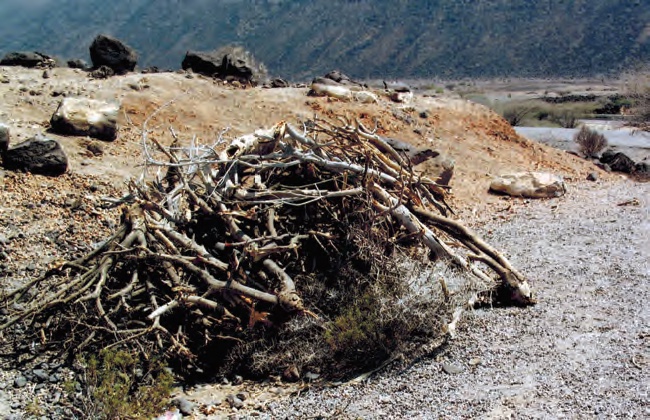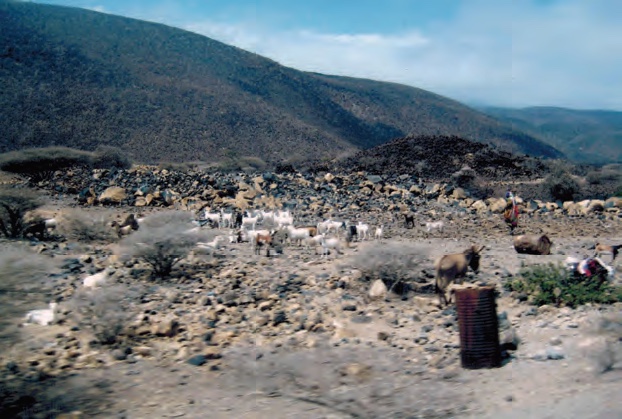NZFFA Member Blogs
Member Blogs
-
Brian Cox's Blog
-
Chris Perley's Blog
-
Dean Satchell's blog
-
Denis Hocking's blog
-
Dennis Neilson's blog
-
Eric Cairn's Blog
-
Grant Hunters blog
-
Hamish Levack's Blog
-
Howard Moore's blog
-
Ian Brennon's blog
-
Ian Brown's Blog
-
Jeff Tombleson's blog
-
John Ellegard's blog
-
John Fairweather's blog
-
John Purey-Cust Ponders
-
Murray Grant's Blog
-
Nick Ledgard's Blog
-
Rik Deaton's Blog
-
Roger May's Blog
-
School of Forestry blog
-
Shem Kerr's blog
-
Vaughan Kearns blog
-
Wink Sutton's Blog
Recent blogs:
The need for fuel wood
Wink Sutton's BlogSaturday, November 29, 2014
On a recent cruise we visited several countries in the Middle East including India and Egypt. As a forester I was well aware of the absence of trees but very much aware of the large population. What on earth do all these people do? What future do they have? Sure, most of their homes and buildings are often constructed without the use of wood but there is a constant demand for fuel wood − more than half the global annual wood harvest is now used as fuel wood. Burning dried animal dung is probably not a sustainable practice because it ultimately deprives the soil of nutrients necessary for growth.
In parts of India as well as in the Arabian peninsula and north Africa, the local population devote an inordinate amount of time to the collection of fuel wood. There is a common belief that the reason for the absence of trees which could supply fuel wood is because much of the land is desert and that there little or no rain. But rarely is the lack of rain the main reason that there are so few trees.
Rainfall may be low and inconsistent but only very rarely is rain totally absent. Some trees can survive and grow in low rainfall areas such as some eucalypts and acacias. What prevents trees from surviving is generally not the very low rainfall but the grazing pressure of goats and camels. Any tree that starts to grow is soon eaten by foraging animals – to get enough to survive the grazing animals must eat all the growing vegetation.
The result is a disturbing dilemma and an almost hopeless situation. Grazing animals provide the locals with a survival livelihood but that can be at the expense of trees which could provide future fuel wood. Research on possible tree species which might survive low and inconsistent rainfall is possibly pointless. Any trial area must not only be fenced off but also guarded 24 hours a day. Unless the area is under strict control and constant surveillance locals desperate for grazing are probably going to let their animals into the trial areas.
Unless the trial area is rigorously controlled how could they ever find an acceptable solution? Even if the trials were a success in finding what tree species should be planted and how they should be managed, a successful fuel wood plantation is far from guaranteed.


Product research priorities for eucalyptus
Dean Satchell's blogWednesday, November 12, 2014
Scion are currently preparing an Diverse Species bid to MB on behalf of the forest industry. This is a partnership between Future Forests Research, University of Canterbury and Scion, and is being funded by growers through our growers commodity levy. Following are my views on the research priorities as I see them:
There appears to be no information available around preservative penetration in PLANTATION E. regnans. I'm referring to ACQ pressure treatment (Copper, but with no chrome ot arsenic) which might make a fine decking product out of regnans. E. regnans is the "best" species for accepting treatment according to the literature I've reviewed and I'd suggest our plantation material is most suitable for available treatment processes, being very different to the native mountain ash in Australia (Plantation regnans has a large earlywood band, is soft and low density).
Obviously acetylation and other modification technologies are well worth pursuing for regnans/nitens/fastigata but ACQ is cheap and readily available technology that could be applied immediately, if penetration were demonstrated to be adequate (i.e. to h3.2). This isn't a big research job. In fact I've got some ACQ treated regnans waiting to be tested under accelerated decay conditions.
I can report that my thermally modified E. regnans deck is very attractive after one year in service. Checking is minimal, which gives it a considerably more attractive appearance to higher density naturally durable eucalyptus in outdoor applications. Generally higher density equates to more surface checking as outdoor decking or cladding. Improving the durability of low-density eucalypts holds much promise for quality products and markets for growers. However, a thermally modified low density eucalypt decking product requires both demonstration of 15 years durability performance and adequate strength through that period. Cladding might only require assessment of durability performance.
An economic assessment is required that provides a thorough analysis of the tradeoff between slower growing durable eucalypts (stringybarks) and faster growing non-durable eucalypts (fastigata, regnans) that will require treatment for outdoor applications or hardening for appearance applications, which each incur additional costs. Growers really do need some basic figures on the consequences of lower wood qualkity that faster growth provides, and how product costs and values should influence planting decisions.
Data is available on average graded sawn timber lengths from unpruned cold-climate eucalypt species. However, costs of finger-jointing (specifically edge jointing) and log to product costs and values of finger-jointed material are required before producers would consider innovative eucalypt cladding and decking products from unpruned trees and headlogs. NZ Sustainable Forest Products have forged the path ahead with their work on edge-jointed red beech cladding and decking products, the rest of the industry needs to take heed. Growers won't plant trees unless they see markets for the timber.
No strength data is available for plantation cold-climate species (E. regnans, E. fastigata, E. nitens) in New Zealand. This precludes their use in structural applications. We all know the stuff is much stronger than radiata, yet there is no market because there is no data. This is key fundamental research to their uptake in New Zealand - Characteristic stresses need to be determined for these eucalypt species. Reference samples need to be tested in accordance with AS/NZS 4063.1:2010. Only once this is done can important structural markets for eucalypt be developed in New Zealand.
Because short-clear lengths are available from the unpruned cold-climate eucalypt resource, structural finger-jointing is necessary to upgrade into value-added structural product. The integrity of structural finger-joints needs to be tested for these species and the economics of producing a structural finger-jointed product needs to be explored to open up markets for high-value appearance structural products such as glulam.
A case needs to be made that untreated E. regnans heartwood meets the durability performance requirements of the building code for internal structural applications. Although H1.2 boron treatment can be used on any species, this is not necessary if heartwood were demonstrated as equivalent durability with Douglas fir heartwood. There are markets for strong untreated framing timber durable enough for applications where there is a risk of moisture penetration and entrapment. Time for some fundamental research.
Other important potential applications for cold-climate eucalypt species include posts and poles. I'm sure growers would be very happy if they could production thin for posts and poles from age 10. We already know that eucalypt is much stiffer and stronger than radiata pine so the challenge is making it fit for purpose. There are actually two challenges:
- durability, and
- stresses (splitting).
We know that young fast-grown cold-climate eucalypt contains high levels of growth stress. There is no point in exploring treatment or modification options to increase durability if the posts are going to split themselves apart (as they do). What we didn't know previously is that stresses can be easily relieved by boring the core out. This new technology is currently being applied in New Zealand for radiata pine poles and piles and could likely be adapted for processing eucalypt thinnings to both relieve stresses and also improve treatment uptake. All that without compromising the strength of the post/pole product! Maybe I'm dreaming, but until the fundamental research is undertaken, we won't know. The costs need to be weighed against the product value in an economic analysis - we are at a crossroads where growers need to know whether cold-climate non-durable eucalypts hold promise for applications such as posts and poles. If not then growers could focus on durable heart eucalypt.
I hope the forest growers levy funded research programme considers these issues, because if we are to create a solid plantation forest industry we need to start thinking about diverse products and begin creating markets for these.
Disclaimer: Personal views expressed in this blog are those of the writers and do not necessarily represent those of the NZ Farm Forestry Association.

 Farm Forestry New Zealand
Farm Forestry New Zealand
One post
Post from Dean Satchell on February 10, 2015 at 9:14PM
Here, the consequence is soil degradation with marginal hill country paying the price - eroding land that should be in trees being denuded of topsoil to pay the bills.
Add a post